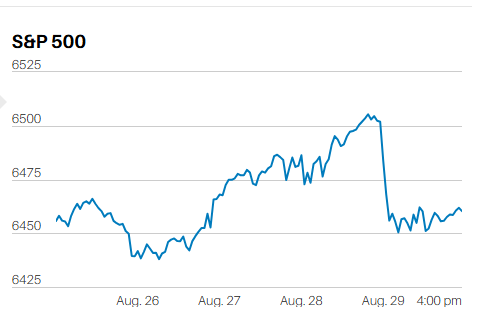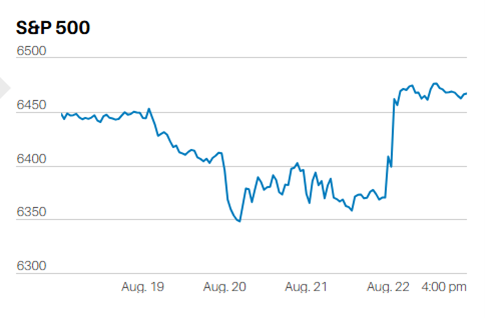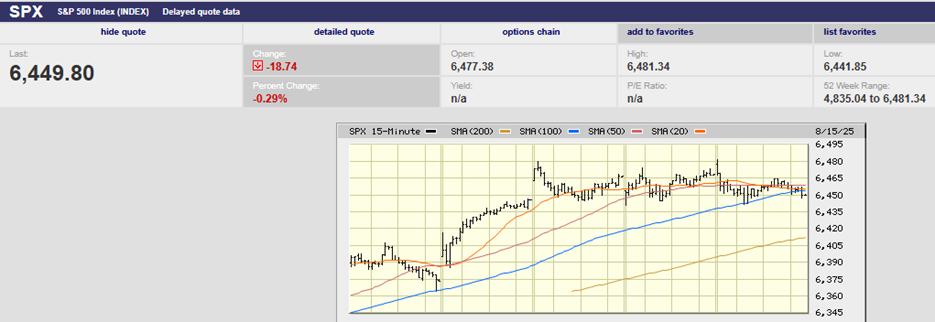Bad markets offer good buying opportunities

Market Update
The S&P 500 fell 5.1% to 3900.86 last week. We wrote in our last newsletter that, “The market looks ready to go lower in the coming weeks. A retest of the 3810.32 low looks likely.” And here we are. It is true we thought a run to the 50-day moving average at 4250 might occur first. It didn’t happen. Instead, the market showed its weakness by being unable to advance at all last week. The highs were 4168.78, 4164.86, and 4160.14 the first three trading days. The algos finally gave up on Thursday with the selling started in earnest in the afternoon. The S&P fell 215 points or 5.2% in the last day and a half of trading. It felt like panic selling. Expect a test of 3810 this week. The bottom of the trading channel is 3710.
The S&P now trades at 16 times 12-month forward earnings, about the long-term average. S&P earnings are expected to rise 11.3% in the 12 months from the end of the first quarter of 2022. Aggregate earnings estimates have barely budged, according to Barron’s. Profit margins are contracting. Rising input costs are a major factor. It’s hard to see how earnings estimates won’t come down eventually. Falling earnings estimates could put additional pressure on stock prices. Although, it's possible the market is already pricing in weaker earnings.
Meanwhile, the U.S. consumer price index continues to rise. The CPI was up 1% in May after rising 0.3% in April. The CPI rose 8.6% from a year earlier up from 8.3% in April. The May annual CPI increase is the largest since December 1981. The Fed-Funds futures are pricing in half-point hikes in June, July, and September. Futures are also pricing in quarter-point hikes in November and December with two more hikes in early 2023. The Fed-funds rate will be 3.5% to 3.75% if all the hikes happen. The two-year Treasury has risen to 3.08% and the 10-year to 3.17%. The two/ten curve is threatening to invert once again. It almost certainly will invert if the Fed follows through on the rate hikes. An inversion would signal a recession in the next six to 18 months.
Regardless of whether the yield curve inverts, the odds favor more downside for the S&P 500 this summer. It is most likely that the market chops sideways for the rest of the year. The next most likely is a continued decline to support between 3200 and 3600. The least likely is a rally back into the mid-4,000s by year-end. We started the year forecasting a flat market with a downside bias. We think low single-digit losses in the S&P 500 for 2022 is now the bull case outcome. It is increasingly likely that the market will end the year below 4000. A decline to 3200 is also no longer a stretch. A 33% drop from 4818 to 3200 would represent a typical bear market. Still not our base case but a growing possibility.
Economic Indicators
The Consumer Price Index dominated the economic news last week. The CPI rose 8.6% year-over-year. It was the most since 1981. Core CPI rose 6.0% on an annual basis. The core number removes food and energy which have seen the highest inflation rates. Consumers must buy both food and energy, which explains the low UMich consumer sentiment index. The June reading of 50.2 fell from the prior month’s 58.4. The 50.2 reading is associated with recessions. The 5-year inflation expectation rose to 3.3% in June from 3.0% in May. Rising inflation expectations are bad news since inflation expectations influence inflation. The Fed is going to keep hiking.
A recession this year is unlikely although not out of the question. It is more likely we’ll see a mild recession in 2023. Domestic demand is strong. Unemployment is low. Real personal income and real personal consumption expenditures point to growth. Real sales and industrial production also indicate a growing economy. Norwood Economics expects growth to average 2% for the remainder of the year.
Norwood Economics Portfolio Update
The Norwood Economics stock portfolio has returned approximately 11% year-to-date. We sold three of our energy companies a few months ago. We still own four energy stocks. There is a good chance we will sell three of the remaining holdings in the next few months. One E&P company is slightly overvalued. A second is at fair value. Our refiner is the most overvalued and likely to be sold soon. We also sold a drug company that was no longer undervalued.
We’ve bought a financial services company along with two communication services companies in the last few weeks. Last week we added a drug company. All four companies are undervalued in our judgement. They all pay dividends ranging from 2.4% to 5.5%.
We have a dozen companies on our watch list, companies we’ve already researched. There are four that we may buy some time in the next few months. Stocks on our short list include a chemical company, a logistics company, an industrial, and a medical device manufacturer. Dividends range from 1.5% to over 6%. All the companies share the same characteristics. We buy companies with strong balance sheets, above-average dividends, and depressed stock prices. Bad markets offer good buying opportunities. We hope to continue to take advantage of the current bad market.
Regards,
Christopher R Norwood, CFA
Chief Market Strategist











